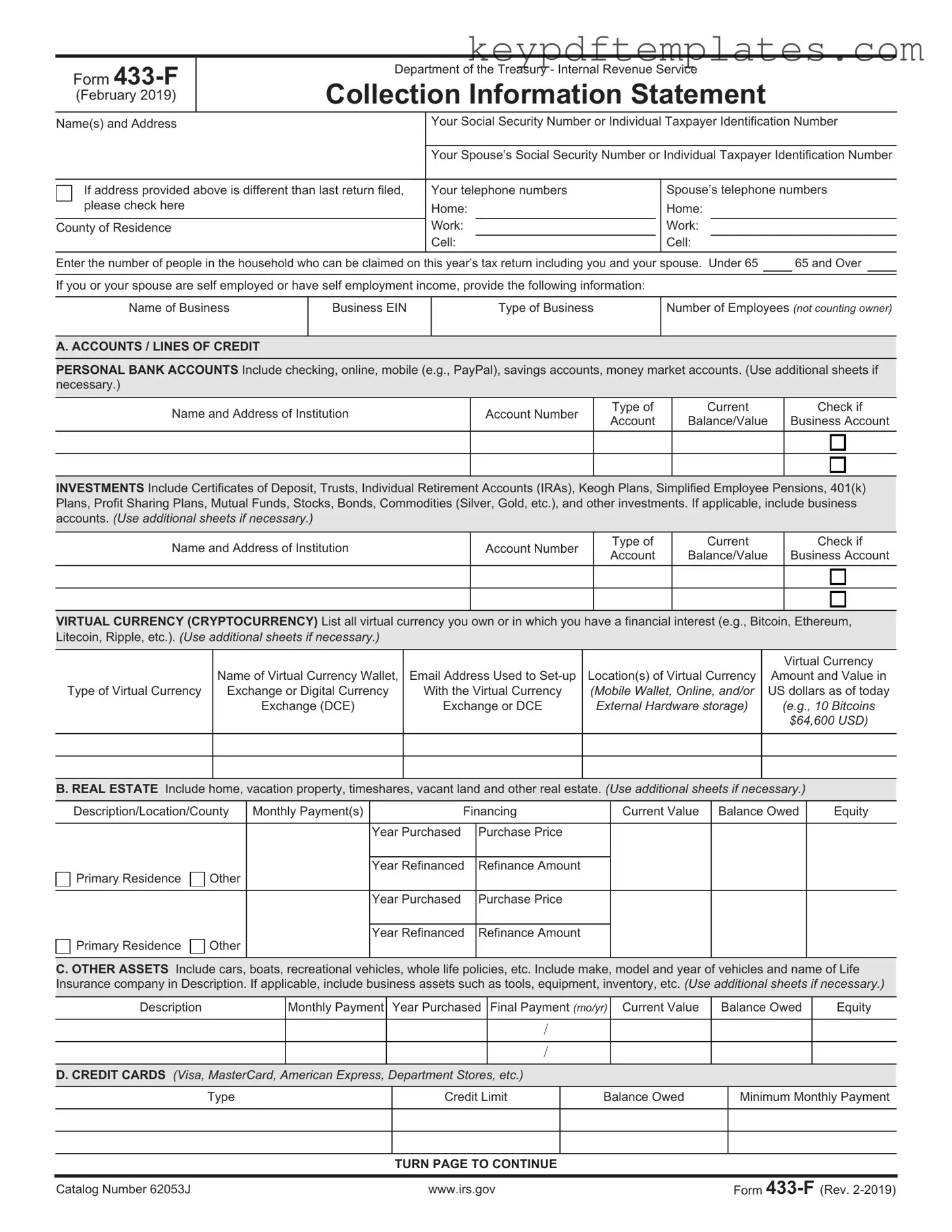Get IRS 433-F Form
The IRS 433-F form is a financial statement used by individuals to provide the Internal Revenue Service with a detailed overview of their financial situation. This form is essential for those seeking to negotiate a payment plan or settle tax debts. Understanding its purpose and how to complete it accurately can significantly impact your dealings with the IRS.
Modify Document Online
